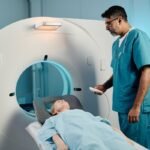According to the WHO, there are about 47.5 million people worldwide who suffer from dementia, with Alzheimer’s disease being the most common form of manifestation. Apart from the fact that there is no 100% effective treatment, this type of dementia is characterized by being irreversible.
Alzheimer’s disease is a type of neurodegenerative dementia that causes deterioration in memory, speech, thinking, behavior, etc. This disease is sometimes preceded by mild cognitive impairment, which would be an intermediate state between a normal cognitive state and dementia.
“Alzheimer’s erases memory, but not feelings.”
-Pasqual Maragall-
Although the cause of this disease is unknown, different factors can intervene in the development of Alzheimer’s disease. These are the ones identified as the most important:
- Age: It is the greatest risk factor.
- Family history: People with parents or siblings with Alzheimer’s disease are more likely to develop the disease. The risk increases if more than one family member has the disease. In this case, genetic, environmental, or both factors may play a role.
- Genetics: According to the Pasqual Maragall Foundation, only 1% of cases can be attributed exclusively to genetics. This usually happens when, in the same family, there are several consecutive generations diagnosed before the age of 65.
If we stick to this last point, it could be deduced that Alzheimer’s disease is genetic and has an early onset.
How does genetics influence the development of Alzheimer’s disease?
We inherit two types of genes from our parents that influence a person’s predisposition to suffer from the disease. These are risk genes and deterministic genes:
- Risk genes increase the likelihood of developing the disease, but they do not guarantee that this will happen. This means that this type of gene is a risk factor like any other.
- Deterministic genes, on the other hand, ensure that whatever you inherit will happen sooner or later. This type of gene is responsible for the 1% of cases in which the disease does develop. When this happens, this type of dementia can be called familial Alzheimer’s disease.
What if a person suspects that they may be part of that 1%?
Currently, there is the possibility of making a presymptomatic diagnosis of Alzheimer’s disease. This diagnosis would be carried out through a genetic test. This test would rule out whether or not the person is a carrier of the mutation that causes this dementia.
Being part of the at-risk population or being suspected of being prone to developing the disease can cause a person to develop a fear that significantly and negatively affects their life. In these cases, the devastating effects of Alzheimer’s can begin to manifest even long before the disease appears.
It is therefore important to note that there are genetic counseling teams that inform, educate, prepare, and resolve the doubts of those people interested in undergoing this type of presymptomatic testing.
The professionals who make up the team have the mission of taking care of their mental health, starting with the fear that can grip them. In addition, they make sure that all ethical principles are respected during the process.
These teams are usually made up of neurologists, psychologists , psychiatrists, geneticists, social workers, etc. This process, in addition to having a high economic cost, is preceded by a great dilemma. In a certain sense, it would be like living while waiting for the arrival of the disease. Although, on the other hand, it would allow us to plan our future taking into account the outcome of the process.
If you decide to find out if you are likely to develop Alzheimer’s disease, the evaluation should always take place after signing the informed consent .
Ultimately, although the chances of being part of that small percentage of people who suffer from familial Alzheimer’s disease are very small, there are techniques that allow us to know our predisposition before the first real symptoms of the disease appear. Of course, we must take into account that, like any predictive technique, the results will have a certain margin of error.
All sources cited were thoroughly reviewed by our team to ensure their quality, reliability, timeliness, and validity. The bibliography of this article was considered reliable and of academic or scientific accuracy.
- De la Vega, R., and Zambrano, A. Thematic interview with Drs. Molinuevo and Sánchez-Valle: genetics and Alzheimer’s disease [online]. Circunvalación del Hipocampo, June 2007 [Accessed: February 24, 2019]. Available at: https://www.hipocampo.org/entrevistas/molinuevo_svalle.asp.
- Pasqual Maragall Foundation. Retrieved on February 22 from https://fpmaragall.org/
- Lopera, F. (2016). Familial Alzheimer’s disease. From The Library, (51), 63-73. Retrieved from https://revistas.itm.edu.co/index.php/desdelabiblioteca/article/view/837
- Setó-Salvia, N. and Clarimon, J. (2010). Genetics of Alzheimer’s disease. Revista Neurol, 50 (6), 360-364.























+ There are no comments
Add yours